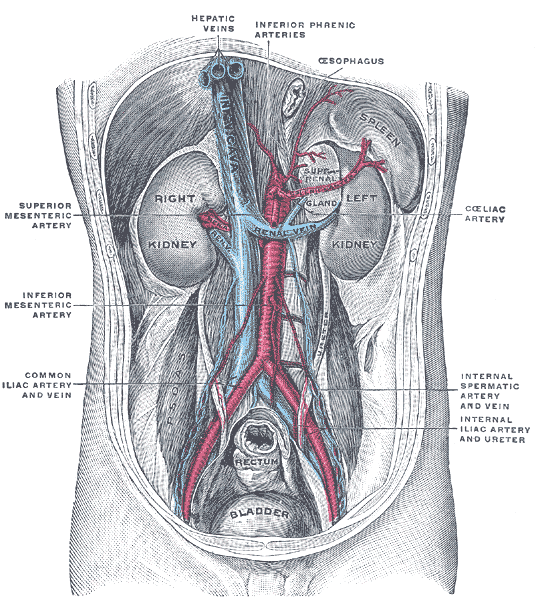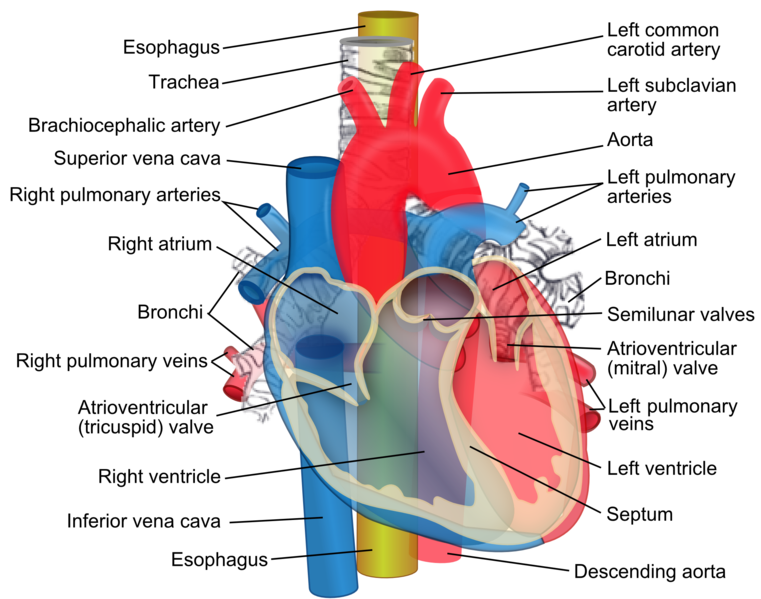[1]
Dalati HA, Jabbr MS, Kassouma J. High-riding brachiocephalic (innominate) artery during surgical tracheostomy. BMJ case reports. 2018 Apr 18:2018():. pii: bcr-2017-221802. doi: 10.1136/bcr-2017-221802. Epub 2018 Apr 18
[PubMed PMID: 29669763]
Level 3 (low-level) evidence
[2]
Subasi ID, Yoruk O, Sipal S, Karakaya AD, Şengöz F. Brachiocephalic artery anomaly at the neck: importance during minimally invasive video-assisted parathyroidectomy. The Journal of craniofacial surgery. 2013 Nov:24(6):e750-73. doi: 10.1097/SCS.0b013e31829ad242. Epub
[PubMed PMID: 24220490]
[3]
Penslar J, Menard C, Lee S. Isolated Left Brachiocephalic Artery in Transposition of the Great Arteries. The Canadian journal of cardiology. 2018 Oct:34(10):1369.e13-1369.e15. doi: 10.1016/j.cjca.2018.07.420. Epub 2018 Jul 27
[PubMed PMID: 30269835]
[4]
Keser G, Aksu K. Diagnosis and differential diagnosis of large-vessel vasculitides. Rheumatology international. 2019 Feb:39(2):169-185. doi: 10.1007/s00296-018-4157-3. Epub 2018 Sep 17
[PubMed PMID: 30221327]
[5]
Gaudric J, Dennery M, Jouhannet C, Kagan N, Saadoun D, Chiche L, Koskas F. [Aortitis and surgery]. La Revue de medecine interne. 2016 Apr:37(4):284-91. doi: 10.1016/j.revmed.2015.12.017. Epub 2016 Jan 18
[PubMed PMID: 26797187]
[6]
Berghmans T, Durieux V, Holbrechts S, Jungels C, Lafitte JJ, Meert AP, Moretti L, Ocak S, Roelandts M, Girard N. Systemic treatments for thymoma and thymic carcinoma: A systematic review. Lung cancer (Amsterdam, Netherlands). 2018 Dec:126():25-31. doi: 10.1016/j.lungcan.2018.10.018. Epub 2018 Oct 18
[PubMed PMID: 30527189]
Level 1 (high-level) evidence
[7]
Salavitabar A, Flyer JN, Torres AJ, Richmond ME, Crystal MA, Turner ME, Chai P, Zuckerman WA. Transcatheter stenting of superior vena cava obstruction after pediatric heart transplantation: A single-center experience assessing risk factors and outcomes. Pediatric transplantation. 2018 Nov:22(7):e13267. doi: 10.1111/petr.13267. Epub 2018 Jul 11
[PubMed PMID: 29992703]
[8]
Noor Khairiah AK, Mohamad Nazrulhisham MN, Hazman MN. Malignant obstruction of superior vena cava: Endovascular stenting using Y-configuration stent in stent technique. The Medical journal of Malaysia. 2018 Dec:73(6):407-409
[PubMed PMID: 30647215]
[9]
Zimmerman S, Davis M. Rapid Fire: Superior Vena Cava Syndrome. Emergency medicine clinics of North America. 2018 Aug:36(3):577-584. doi: 10.1016/j.emc.2018.04.011. Epub 2018 Jun 12
[PubMed PMID: 30037444]
[10]
Nomura M, Kida S, Yamashima T, Yamashita J, Yoshikawa J, Matsui O. Percutaneous transluminal angioplasty and stent placement for subclavian and brachiocephalic artery stenosis in aortitis syndrome. Cardiovascular and interventional radiology. 1999 Sep-Oct:22(5):427-32
[PubMed PMID: 10501899]
[11]
Rangel-Castilla L, Levy EI, Siddiqui AH. Direct Cervical Carotid Stenting and Angioplasty of Right Internal Carotid Artery and Brachiocephalic Artery Ostial Stenoses With Flow Reversal: 2-Dimensional Operative Video. Operative neurosurgery (Hagerstown, Md.). 2019 Feb 1:16(2):269-270. doi: 10.1093/ons/opy113. Epub
[PubMed PMID: 29846684]
[12]
van Hattum ES, de Vries JP, Lalezari F, van den Berg JC, Moll FL. Angioplasty with or without stent placement in the brachiocephalic artery: feasible and durable? A retrospective cohort study. Journal of vascular and interventional radiology : JVIR. 2007 Sep:18(9):1088-93
[PubMed PMID: 17804769]
Level 2 (mid-level) evidence
[14]
Shum D, Gore NM. Saddle pulmonary embolus. The Journal of the American Osteopathic Association. 2015 May:115(5):345. doi: 10.7556/jaoa.2015.069. Epub
[PubMed PMID: 25938533]
[15]
Messmer M, Tsai HL, Varadhan R, Swinnen LJ, Jones RJ, Ambinder RF, Shanbhag SP, Borowitz MJ, Wagner-Johnston N. R-CHOP without radiation in frontline management of primary mediastinal B-cell lymphoma. Leukemia & lymphoma. 2019 May:60(5):1261-1265. doi: 10.1080/10428194.2018.1519812. Epub 2019 Jan 18
[PubMed PMID: 30656983]
[16]
Hüttmann A, Rekowski J, Müller SP, Hertenstein B, Franzius C, Mesters R, Weckesser M, Kroschinsky F, Kotzerke J, Ganser A, Bengel FM, La Rosée P, Freesmeyer M, Höffkes HG, Hertel A, Behringer D, Prange-Krex G, Griesshammer M, Holzinger J, Wilop S, Krohn T, Raghavachar A, Maschmeyer G, Brink I, Schroers R, Gaska T, Bernhard H, Giagounidis A, Schütte J, Dienst A, Hautzel H, Naumann R, Klein A, Hahn D, Pöpperl G, Grube M, Marienhagen J, Schwarzer A, Kurch L, Höhler T, Steiniger H, Nückel H, Südhoff T, Römer W, Brinkmann M, Ose C, Alashkar F, Schmitz C, Dürig J, Hoelzer D, Jöckel KH, Klapper W, Dührsen U. Six versus eight doses of rituximab in patients with aggressive B cell lymphoma receiving six cycles of CHOP: results from the "Positron Emission Tomography-Guided Therapy of Aggressive Non-Hodgkin Lymphomas" (PETAL) trial. Annals of hematology. 2019 Apr:98(4):897-907. doi: 10.1007/s00277-018-3578-0. Epub 2019 Jan 4
[PubMed PMID: 30610279]


